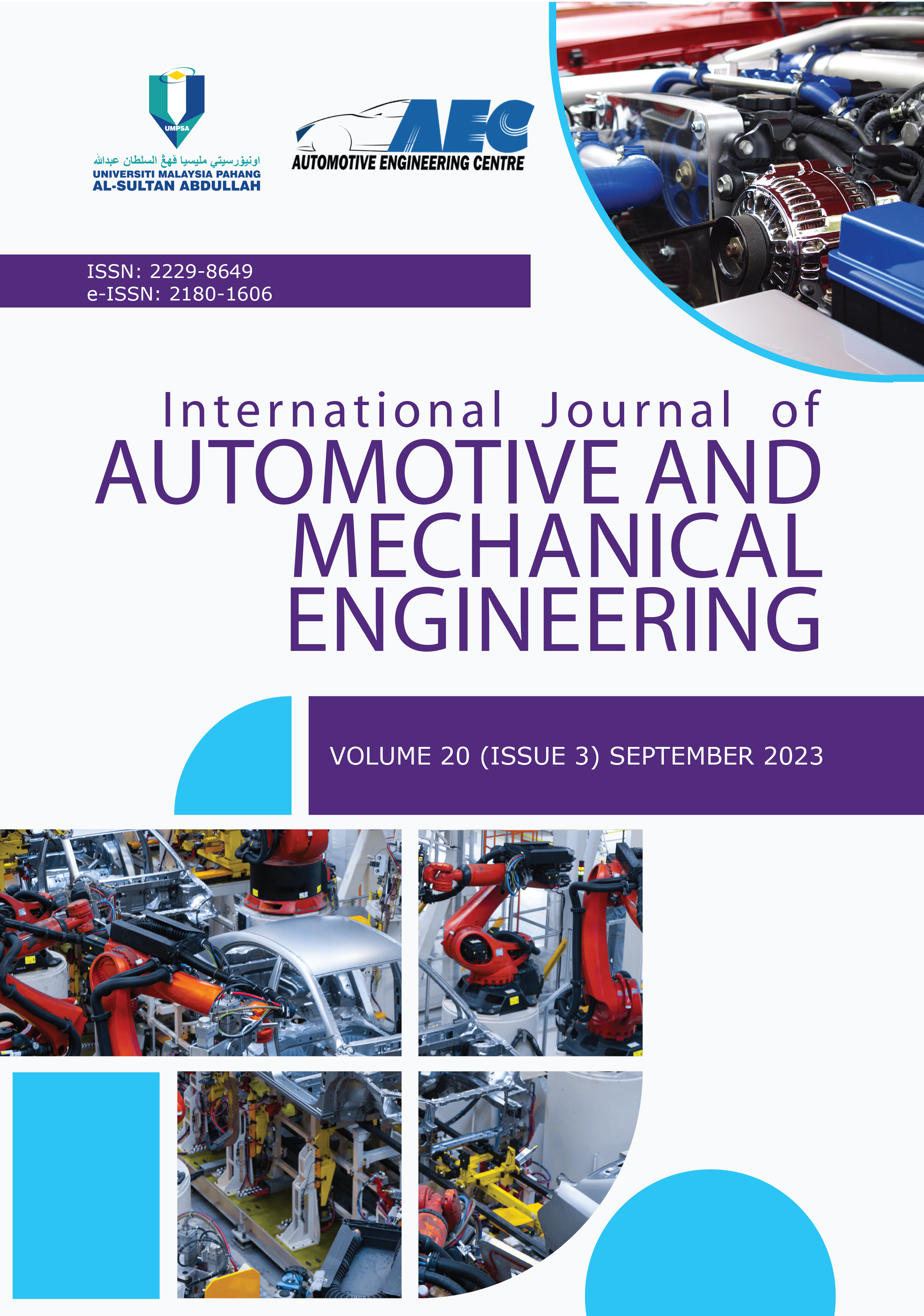High-Cycle Fatigue Life Behaviour of Fabricated Glass Fibre-Reinforced Polymer
DOI:
https://doi.org/10.15282/ijame.20.3.2023.13.0827Keywords:
Fatigue test, Composite, Constant amplitude, GFRP, High cycle fatigueAbstract
This study focuses on the fatigue behaviour analysis of glass fibre-reinforced polymer (GFRP) composite specimens under high-cycle fatigue loading conditions. Therefore, property validation is recommended in the material development process upon further investigation of the fabricated GRFP. This study aims to evaluate the behaviour of the fabricated GFRP fatigue specimen when subjected to high-cycle fatigue loads and compare it to existing studies. A GFRP fatigue test sample was fabricated using the hand layup process into a flat rectangular panel, which was then cut into a small dimension of 28×2×0.2 cm fatigue specimen. Fatigue tests were performed on five flat specimens at different constant amplitude loads or stress levels between 40% and 80% of ultimate tensile strength to obtain the stress–life curve for the fabricated GFRP. Results showed that the high-stress levels of 80% contributed to the most reduced fatigue life cycle of GFRP. This result is consistent with previous studies and lies within the published life cycle range, validating the fabricated GRFP. A new parameter called the failure modulus, or Mf, may be used to quantify a particular set of fatigue tests.
Downloads
Published
Issue
Section
License
Copyright (c) 2023 Universiti Malaysia Pahang Publishing

This work is licensed under a Creative Commons Attribution-NonCommercial 4.0 International License.








